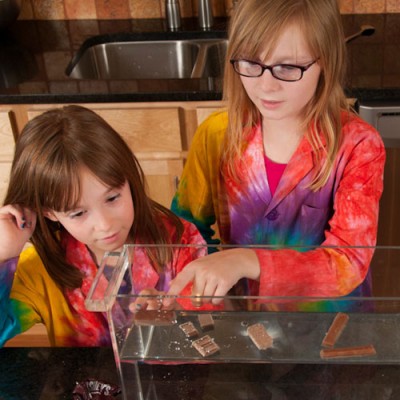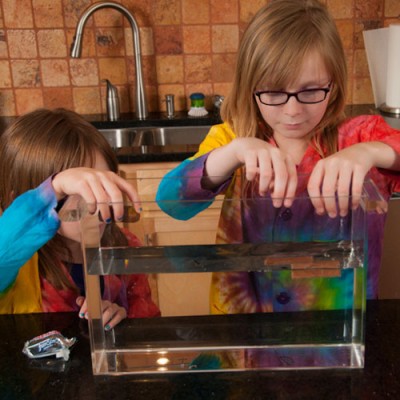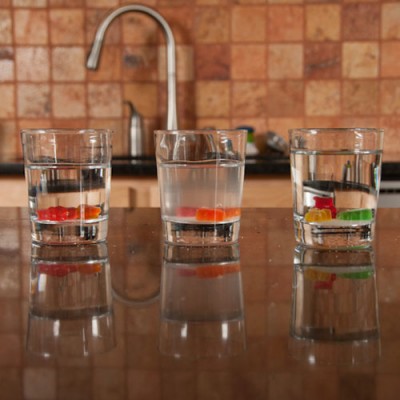Candy Science – What's Inside a Piece of Candy?
By Blog Editor Susan Wells
I don’t always encourage my kids to play with their food, but sometimes it’s necessary to see just what is inside.
We went to the store. My girls don’t get a lot of candy, except maybe at Halloween and Easter, so spending a little time in the candy aisle was a real treat.
We decided to try out a few classic candy experiments that are found all over the Internet. I will share a few with you this week and the rest next Monday. You can find complete step by step instructions along with the science behind each experiment on our Sick Science! Summer Camp Candy Chemistry Experiments page.
This week’s experiments revolved around what is inside the candy, and what reactions we would get if we dropped it all in some type of liquid.
The first experiment we tried was testing different chocolate candy bars and determining which ones would float or sink. Of the four we tried (Hershey’s, Kit Kat, Snickers and Three Musketeers) two sank and two floated at the top. The two with air pockets – Kit Kat and Three Musketeers floated. The Hershey’s chocolate bar and Snickers both sank. The Snickers wasn’t surprising, as it is a dense and heavy candy bar. I wasn’t sure about the Hershey’s bar: it isn’t very heavy, can contain popped air bubbles occasionally.

All four candy bars floated on the surface for a few minutes before two of them took the plunge.
A note of warning – don’t leave the chocolate in the water for too long or it will begin to look bad. Really bad.
Next, we did the popular experiment of dropping gummy bears into water. Most candies made with sugar will dissolve in water. Even our candy bars began to dissolve after several minutes of sitting in the water. The gummy’s grow and expand.
The secret is in the gelatin added to gummy candies to give them the stretchy, chewy, gumminess that we all love.
Gelatin is composed of long, twisted, intertwined strands of molecules. During the heating and cooling process, these molecules harden as the water is removed and the gummy bears cool. The gelatin makes the gummy bear act more like a sponge, absorbing the water.
What will happen if you add salt to the water? Use distilled instead of tap water? Add sugar? Does this work with all gummy candies? Leave us your experiments and results in the comments below.
Just don’t eat the gummy bears after they have been swimming in the non-chloranated water for a few days…there will be something else swimming with them.
Thank you to CandyExperiments.com for the Floating Candy Bar experiment idea.






Creating sweets is a delightful and fun art! But it’s also a amazing and accurate technology. When you are making sweets, whether you know it or not, you are a chemist—transforming issue from one condition to another!
Looks like the kids are having just as much fun experimenting with the chocolates and lollies as they would be eating them!